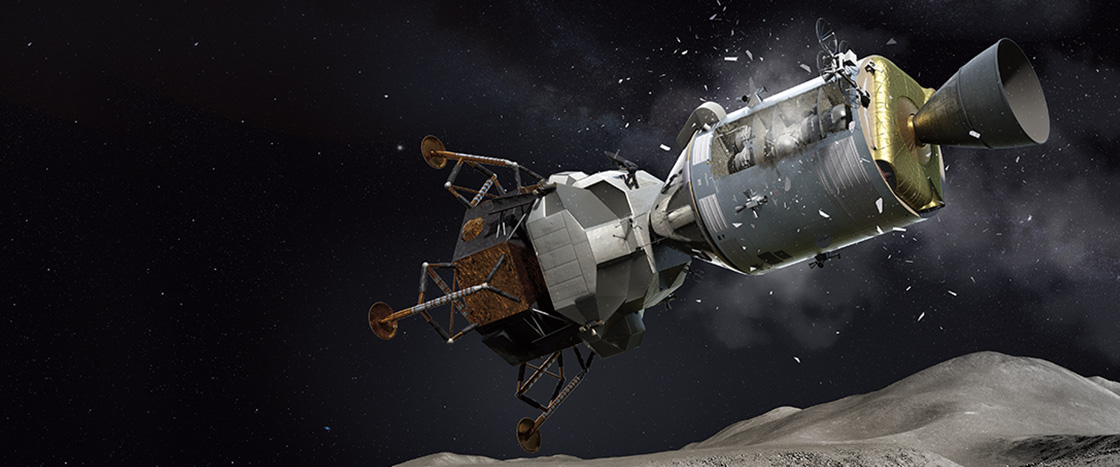Art by Gary Hanna
It was April 11, 1970. Three astronauts were inside their spacecraft. It was called Apollo 13. It sat on top of a rocket. Takeoff was about to begin.
Five, four, three, two, one . . .
The rocket shot into the sky. It flew at 24,000 miles per hour!
The rocket shot up with such force that the skin on the men’s faces stretched back. It felt like the skin would rip off their skulls and their bones might break.
But this was normal. The takeoff had gone well. The astronauts Jim Lovell, Fred Haise, and Jack Swigert were on their way to the moon!
It was April 11, 1970. Three astronauts were inside their spacecraft. It was called Apollo 13. It sat on top of a rocket. They were about to takeoff.
Five, four, three, two, one . . .
The rocket went into the sky. It flew fast. It was going 24,000 miles per hour!
The rocket shot up with a great force. The skin on the men’s faces stretched back. It felt like the skin would rip off their skulls. It felt like their bones might break.
But this was normal. The takeoff had gone well. The astronauts Jim Lovell, Fred Haise, and Jack Swigert were on their way to the moon!
It was April 11, 1970. Three astronauts were inside their spacecraft called Apollo 13. It sat on top of a rocket about to take off.
The rocket shot into the sky, racing at 24,000 miles per hour!
The rocket shot up with such force that the skin on the men’s faces stretched back. It felt like the skin would rip off their skulls and their bones might break.
But this was normal and the takeoff had gone well. The astronauts Jim Lovell, Fred Haise, and Jack Swigert were on their way to the moon!

